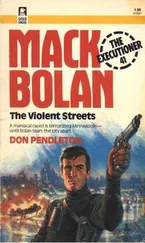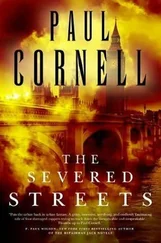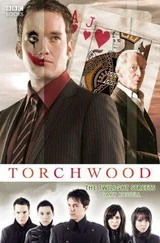“Yeah,” says Harry, dragging on his cigarette. “I guess ol’ Eduardo did a number on me.”
“Used and abused and tossed away like a dirty condom,” says Garvey, from the back of the room.
“You talkin’ ’bout Special Agent Burns,” says Ed Brown. “Hey, Harry, I hear Burns already has his own desk over at the FBI office. I hear he’s all moved in.”
“His own desk, his own car,” adds Kincaid.
“Hey, Harry,” says Ed Brown. “You ever hear from your partner? Does he callyou up and tell you how things are going over there in Woodlawn?”
“Yeah, he sent me a postcard once,” says Edgerton. “It said, ‘Wish you were here’ on the back.”
“You stick with us, Harry,” says Kincaid dryly. “We’ll take good care of you.”
“Yeah,” says Edgerton. “I know you will.”
Considering it’s Edgerton, the banter is easy and almost affectionate. After all, this is the same homicide unit in which the diagnosis of Gene Constantine’s diabetes was greeted by a coffee room chalkboard divided by two headings: “Those who give a shit if Constantine dies” and “Those who don’t.” Sergeant Childs, Lieutenant Stanton, Mother Teresa and Barbara Constantine topped the latter list. The shorter column featured Gene himself, followed by the city employees’ credit union. By that standard of camaraderie, Edgerton isn’t putting up with anything out of the ordinary on this slow four-to-twelve shift. In fact, the scene being played out in the main office is a rare performance of Harry Edgerton as Just One of the Guys, a homicide man among homicide men. Never mind that Edgerton still thinks the world of Ed Burns and the ongoing Board-ley investigation. And never mind that Kincaid and Eddie Brown don’t really believe that Edgerton wants to be working straight murders when his bunky is over at the FBI field office fleshing out a two-year conspiracy probe. Never mind all that bitching earlier in the year, because right now Edgerton is handling murders.
It’s the new Harry who laughs when his colleagues assure him that they’re going to make something out of him, the changed man who makes a point of announcing to the office that he’s getting ready to answer a ringing phone.
“Go for it, Harry.”
“Don’t hurt yourself there, Harry.”
“He got it on three rings. Someone call a fuckin’ press conference.”
Edgerton chuckles, the picture of tolerance. He cups one hand over the receiver, then turns in his chair, feigning confusion.
“What do I do?” he asks in mock earnest. “Just talk into this part?”
“Yeah, put the top to your ear and talk into the bottom.”
“Homicide unit. Edgerton.”
“Way to go, Harry, babe.”
SATURDAY, JULY 9
Hotter than hell up here.
It’s three in the morning and the coffee room is 90 degrees or better. Apparently, some bean counter in fiscal services decided that the midnight shift doesn’t need any heat before February or air conditioning before August, and now Donald Kincaid is out in the main office, stalking back and forth in his shirttails, Jockey shorts and socks, threatening total nudity if the temperature doesn’t fall before morning. And Kincaid without clothes on an overnight shift is a dangerous thing.
“Oh God,” says Rich Garvey, his face a sickly blue from the television glow. “Donald’s got his pants off. God help anyone who sleeps on his stomach tonight.”
It’s an old routine for Nolan’s squad, this running joke about Kincaid looking for love on the overnight shift, forcing his attentions on the younger detectives. Last night, McAllister fell asleep on the green vinyl sofa only to wake in mortal terror an hour later: Kincaid was on top of him, cooing softly.
“Naw, not tonight,” Kincaid says, pulling the tie from his collar and stretching himself across the sofa. “Too damn hot for that.”
Every man in the room sends up the same prayer: Lord, let the telephone ring. Let that 2100 extension light up with death and mayhem before we all drown in our own sweat and stink. Every man in the room would take a drug murder right now. A double even, with two bleached skeletons in a basement somewhere and not a witness or suspect to be found. They don’t care what the call is as long as they can get out on the street where, incredibly, it’s ten degrees cooler.
Out in the main office, Roger Nolan has the video recorder wired up so that half the squad can watch some godawful movie in which everyone is chasing one another in automobiles. The first movie in Nolan’s midnight shift triple feature is generally excellent, and the second is usually tolerable. But by three o’clock, Nolan always manages to come up with something guaranteed to induce sleep, and at that point, sleep begins to acquire a certain appeal.
The VCR is Nolan’s concession to the hell of midnight shift, to the absurdity of six grown men spending a week of overnights together in a downtown office building. In Baltimore, a homicide detective works three weeks of eight-to-four, then two weeks of four-to-twelve, then one week of midnight. Which leads to a strange inversion: at any given moment, an entire shift of three squads is working daywork, two squads are working four-to-twelve, and the squad working midnight is on its own in those hours when nearly half of all homicides occur. On a jumping midnight tour, no one has time for movies or anything else. On a shift with two murders and a police shooting, for example, no one even presumes to think about sleep. But on the slow nights, on a night like this, the detectives learn what rigor mortis is all about.
“My back is killing me,” says Garvey.
Of course it is. After all, he’s trying to sleep sitting in a metal desk chair, his head horizontal to the top of the chair back. The sixth floor is hotter than the inside of a Weber grill on a Fourth of July weekend and Garvey still has his tie on. The man is not real.
Kincaid is now snoring on the green couch. Bowman is around the corner, out of sight, but when last seen he was also nodding, his chair propped against the wall, his short legs barely touching the floor. Edgerton is who the hell knows where, probably down on Baltimore Street blasting space critters on a video game.
“Hey, Rich,” says Nolan, a foot and a half from the TV screen, “check this part out. This almost makes the movie.”
Garvey lifts his head in time to see one tough guy blow another apart with something that appears to be a rocket launcher.
“That was great, Rog.”
Nolan senses the ennui and slowly glides over to the television, using his legs to propel the wheeled chair. He scans the side of another videotape box. “How about a John Wayne movie?”
Garvey yawns, then shrugs. “Whatever,” he says finally.
“I’ve got two on this tape where the Duke actually dies,” says Nolan, still wide awake. “Trivia question: In how many movies did John Wayne’s character actually die?”
Garvey looks at Nolan and sees, not his squad sergeant, but a large black man with a pitchfork and horns on his head. The innermost circle of hell, Garvey now knows, is a steaming municipal building with no beds, bile green walls and trivia questions from a superior at three in the morning.
“Thirteen,” says Nolan, answering his own question. “Or is it fourteen? We figured it out last night… I think it’s fourteen. The one everyone always forgets is Wake of the Red Witch.”
Nolan knows. He knows everything. Ask him about the 1939 Academy Awards and he’ll tell you about the catfight for Best Supporting Actress. Ask him about the Peloponnesian War and he’ll explain the essentials of hoplite infantry tactics. Mention the western coast of Borneo and… well, Terry McLarney once made that mistake.
Читать дальше












